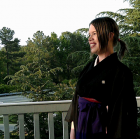To affinity and beyond! How our preference to be among similar people interacts with our social ecology
To explain this apparent puzzle, Schug Yuki, Horikawa, and Takemura (2009) proposed that cultural differences in self-friend similarity could be explained not as a result of cultural differences in the preference for similarity (although cultural differences in the extent of this preference may occur), but rather by relational mobility, or the opportunities that societies provide individuals to form new relationships (Schug, Yuki & Maddux, 2010; Yuki & Schug, 2012). So, even if you prefer to become friends with someone like you, if you live in a society with low relational mobility you might end up choosing your friends based on who is available, rather than based on your personal preferences. And, a number of studies have found that relational mobility tends to be a lot lower in Japanese society than it is in North American society (See Yuki & Schug, 2012 for a review). So, breaking with the tradition of psychologists (who tend to think more about individual preferences than about social context, more typically in the realm of sociology), the researchers suspected the difference in similarity between friends in North America and Japan might be due to differences in the society, rather than underlying cultural differences in individual preferences.
They asked groups of American and Japanese participants to report their preferences for similarity in a potential new friendship partner and also asked them to estimate the similarity between their close friends and themselves for a number of traits. They found that both American and Japanese participants preferred a similar person as a friend. But the extent to which they reported how similar they were to their existing friends depended on how much relational mobility they felt existed in their social environment: the lower the perceived relational mobility, the lower the similarity among their friends. In fact, when they looked at Japanese and American participants who perceived their social network as having the same level of relational mobility, there was no cultural difference in how similar they and their close friends were—participants in both countries who felt there were more chances to form new and leave old relationships felt their friends were more similar. It seems like people in Japan and the US aren’t so different after all-- Americans just seem to have more opportunities to choose new (and discard old) friends.
The size of the pool matters
The ability to choose from a larger number of choices gives people more chances to put their preferences for similarity into practice. This was highlighted by a study conducted by Bahns, Pickett, and Crandall (2012). They approached pairs of students who happened to be hanging out either at a large university or a small college campus, and asked them to fill out a survey. They found that pairs from the small college campus tended to be less similar to each other than pairs from the large university campus, suggesting that the larger pool from which students selected their friends allowed them to choose a more similar friend. This result is even more impressive when you think about the fact that the large university overall had a more diverse group of students.
Another study conducted by sociologist Ishiguro (2011) examined the levels of actual similarity between pairs of close friends in Japan. He found that you could use the number of people an individual had met in the past year, and the number of people they knew overall, to predict how similar the friends were in the pairs. The more acquaintances, the more similar the friends were. Research on homogamy has also shown that people who broaden their search to extend outside of narrow ethnic and religious communities are more likely to find a similar mate in terms of personality than those who do not (Ahern, Cole, Johnson, & Wong, 1981; Guttman, Zohar, Willerman, & Kahneman, 1988). It seems like widening the size of the pool you choose from translates to higher levels of similarity. The important thing to remember is that the effects of similarity are brought about by personal choices—random mobility should not have an impact on the similarity among people. In this sense, our choices about whom we associate with, combined with our preference for similarity, is what causes levels of similarity between friends and couples to increase. Next, we will discuss implications of these choices for society at large.
The dark side of the preference for similarity
So far we’ve established that people tend to prefer similar others, but whether or not you can actually end up in relationships with similar people depends on the social environment, and how easy it is in that environment to choose people to form relationships with. That is, the higher the relational mobility of the environment (the more choices one has to form new and leave old relationships), the more chances there are for people’s preferences to translate into actual choices.


